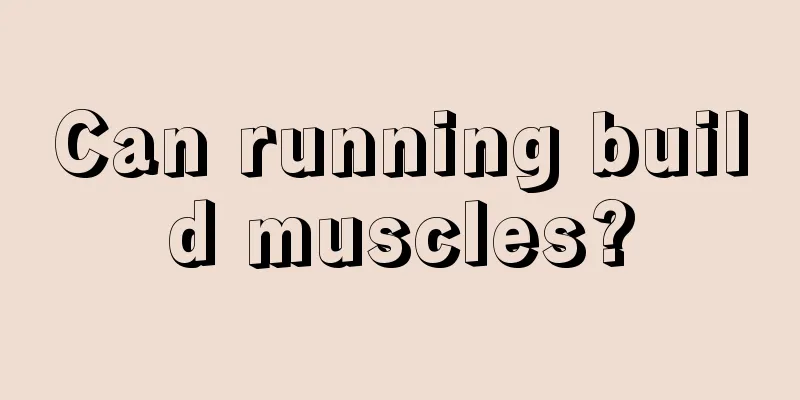Can running build muscles?

|
Running is a relatively healthy form of exercise. It can promote the development of our leg muscles and enhance our body resistance. Therefore, it is good for everyone to exercise appropriately when they have nothing to do. When running, we need to do warm-up exercises and pay attention to the running posture, which is helpful for muscle formation. I hope you can understand which muscles running promotes development. 1. Warm-up exercises I believe that it is no longer necessary to popularize the idea of warming up before exercise, especially before running, when stretching the legs is particularly important. Only when the calves are fully warmed up and stretched properly can they be in the best condition to participate in the "weight loss battle". 2. Landing skills The most important technique for losing weight is running. Many girls land on the forefoot when running, which makes running easy and effortless, but it is not suitable for girls with thick calves. The correct way to prevent your calves from getting thicker is to land on your heels and then jog with the entire sole of your foot touching the ground. We can compare it to race walking. Which race walker has overdeveloped calf muscles? 3. Aerobic exercise The actual fat burning starts after 30 minutes of continuous exercise, so you need to keep running for more than half an hour. It is important to note that you should not mistakenly believe that the more intense the exercise, the better the weight loss effect. It is wrong to only focus on the calories consumed in each exercise. Generally, jogging at 6-8km/hr is very suitable. Once the intensity is increased and the speed is accelerated, the calories consumed will indeed increase, but it will cause excessive burden on the calves and knees, and the muscles will grow faster. 4. Calf stretch Stretching after exercise is crucial to shaping your calves. Here I would like to give you a tip: those lazy ladies can completely give up the traditional leg-lifting press. A more convenient way is to stand at an arm's width away from the wall, then support yourself with your hands on the wall, with your body forming a 30-degree angle with the wall. Hold on for 5 minutes and feel your calf muscles being infinitely stretched. You can adjust the position according to your body flexibility. 5. Soak your legs in hot water Don’t think that you’re done just by doing calf stretching exercises. There is still one step left in your plan for beautiful legs, which is to keep soaking your calves in hot water after running. You can buy a wooden barrel, soak your legs, listen to music and read a book to fully promote blood circulation in your calves. After soaking, use lotion to massage your calves. The choice of cream is not very demanding. Apply it on the calves and massage from bottom to top, and massage in circles until it is completely absorbed. After applying, gently pat your calves to relax your muscles completely. The article tells us in detail that running can build muscles, especially in the calf area, because running is good for burning fat and sugar in the legs, thereby promoting protein synthesis, so friends who run regularly have stronger legs. Running not only exercises muscles, but also regulates our heart rate. |
<<: Can regular running help you build muscle?
>>: Are weighted vests good for running?
Recommend
What are the precautions for riding in summer
There are many kinds of sports in summer, but no ...
What are some exercise methods to lose belly fat?
There are really a lot of people with belly fat. ...
Can I jog in the morning during my period?
The menstrual period is a special physiological p...
What are the precautions for doing dumbbell two-handed rowing?
The bent-over dumbbell row has a relatively large...
When is the best time to run every evening?
Running is a simple fitness exercise that is very...
Is it okay to go running after dinner?
Running has become a very popular sport, because ...
What are the benefits of a push-up stand?
Push-ups are a fitness activity that many male fr...
What are the essentials of running and walking?
Any sport has its own standard movements and esse...
Come and try these home weight loss exercises to reduce edema in summer!
China has the highest number of obese people in t...
Can regular pelvic floor exercises improve sexual function?
Kegel exercises are a very simple type of exercis...
Is the treadmill an aerobic exercise? What are the precautions?
Treadmill is a very good sport. It can help us qu...
What is the method of fancy rope skipping?
Rope skipping is a sport that many people know. I...
How to recover after strenuous exercise?
Nowadays, more and more people pay more attention...
What are the various ball sports?
Many people choose different ways of exercising, ...
What are the benefits of jogging for 10 minutes?
Jogging is a very good aerobic exercise. Regular ...









